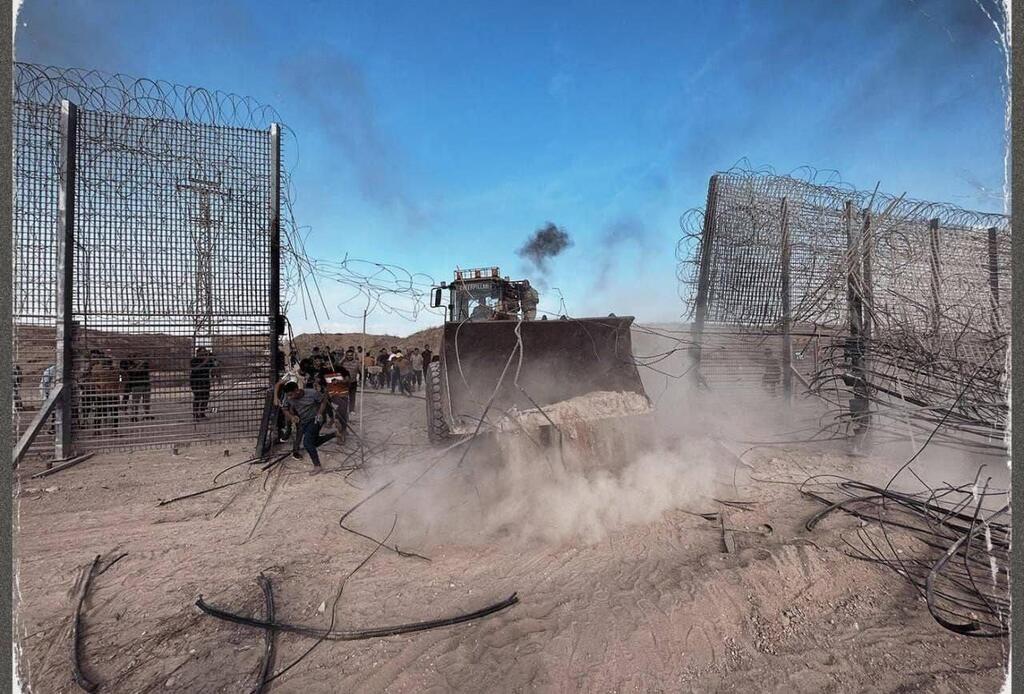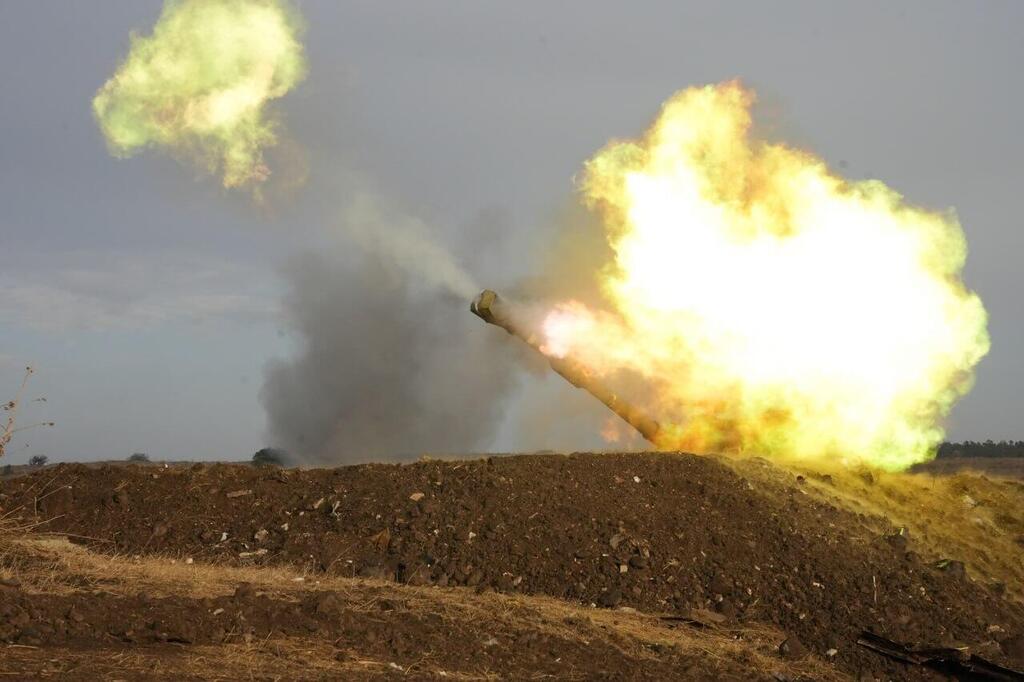Destroying the bulldozer that breached the fence on October 7
(Video: IDF Spokesperson's Unit)
For the first time since the Yom Kippur War, the Israeli Artillery Corps has been fully mobilized, both in the south and north of the country, operating relentlessly for an entire month. Over the past month, the artillery soldiers have launched tens of thousands of precision-guided munitions and various types of shells, primarily targeting the Gaza Strip.
Read more:
One of the lethal armaments that the IDF unusually positioned in the northern region to counter the threat from Hezbollah's invasion brigades, namely the Radwan force, is the Ra'am Eitan. This weapon system comprises massive rockets, each laden with 64 bombs. These are essentially fragmentation grenades that scatter over a wide open area, annihilating any living thing within that space.
The working mechanism of these rockets, effective over tens of kilometers, evokes comparisons with the contentious cluster bomb. This precise rocket previously contained multiple unexploded ordnances that were left scattered across the battlefield. Tragically, these dormant explosives were often accidentally triggered by unsuspecting civilians, including children, who ventured into the area and made contact, resulting in fatal casualties.
The Artillery Corps in action
(Video: IDF Spokesperson's Unit)
To mitigate such risks, the mini bombs used by the IDF are designed with four separate arming stages, as stipulated by American standards for such lethal weaponry, thereby reducing the misfire rate to less than 1%. The IDF has stockpiled hundreds of these rockets, and plans to upgrade the arsenal within a year with a newer version of the weapon.
The Ra'am Eitan rockets have yet to see action, but its smaller counterpart, the Romach system of rockets (a range of artillery rockets developed and manufactured by Israel Military Industries, serving the IDF and global clients, available in two calibers with a maximum range of 25 miles) have been fired 150 times at Hamas targets in the Gaza Strip, supplementing the aerial bombardment.
Within a day of the start of the war, the artillery battalions operating the M-109 self-propelled artillery vehicle were mobilized and began launching shells into the nearby area. In total, 10 artillery battalions equipped with self-propelled guns, including reserve units, were strategically positioned in the southern and northern regions, deploying hundreds of cannons.
So far, the cannons have discharged tens of thousands of shells, with thousands of them directed toward the north. The vast majority of these shells carry explosives, illuminants, smoke and other payloads. The first four aerial strikes on Gaza were executed by the Artillery Corps, operating from the Air Force base in Palmachim.
These strikes unleashed a barrage of missiles on numerous terrorists who had infiltrated the Gaza border region, including their pick-up vehicles, thereby mitigating further incursions into more distant communities. Video footage above shows a UAV obliterating a Hamas bulldozer that was caught on camera widening a breach in the border fence.
In some instances, the gravity of the situation led to airstrikes that exceeded standard safety protocols: the operators, who quickly initiated unrestrained engagement, in one such instance fired a missile at a terrorist group located only a few meters away from an armored jeep belonging to a ground unit.
The ground unit remained unscathed and was in fact the one that had requested the aerial support. In a different scenario, a military unit stationed near Kibbutz Nir Am misidentified reservists as terrorists and called for an airstrike against them. However, the operator managed to halt the strike at the last minute, thus averting a potentially catastrophic friendly fire incident.
UAVs were downed, but confidential data was not breached
In the northern sector as well, the IDF's artillery units respond to every Hezbollah provocation with artillery fire. However, their operation is not limited to that. The Northern Command has also stationed launchers for the new Barak Eitan shells. These projectiles are akin to missiles, albeit smaller, and are equipped with safety mechanisms to prevent unintended descent. They are designed to eliminate enemies within specific zones in smaller open areas.
A tale of heroism also emerged from these units: Lt. Eden Nimri, a platoon leader from the Rochev Shamaim unit in the Gaza Division, was tragically killed during an unexpected terrorist assault inside a base outpost. She bravely ensured the safety of her fellow female soldiers who were taking cover with her in a shelter.







